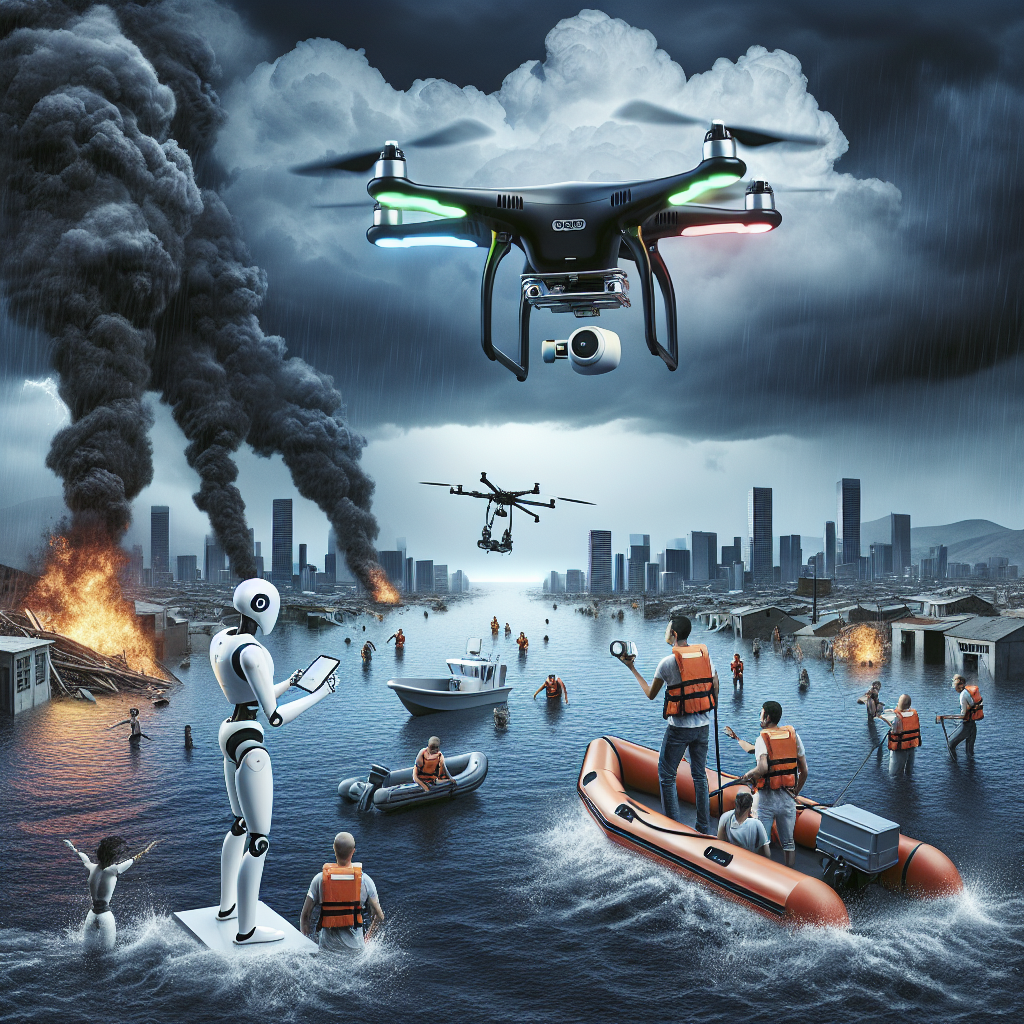Artificial Intelligence (AI) has been heralded as a game-changer in various industries, including disaster response. With its ability to process vast amounts of data quickly and accurately, AI has the potential to revolutionize how emergency services respond to natural disasters, such as hurricanes, earthquakes, and wildfires. However, while AI offers great promise, it also brings with it a unique set of risks that must be carefully considered and managed. In this article, we will explore the risks of AI in disaster response and their potential impacts on emergency preparedness.
One of the key risks of using AI in disaster response is the potential for errors or malfunctions in the technology. AI systems rely on complex algorithms to make decisions based on the data they receive. If these algorithms are flawed or if the data inputted into the system is incorrect, the AI system may make incorrect decisions that could have serious consequences for emergency responders and the people they are trying to help. For example, if an AI system incorrectly identifies a safe evacuation route during a wildfire, it could put lives at risk.
Another risk of AI in disaster response is the potential for bias in the algorithms used by these systems. AI systems are only as good as the data they are trained on, and if that data is biased in some way, the AI system may perpetuate that bias in its decision-making. This could lead to unfair or discriminatory outcomes in disaster response efforts, potentially exacerbating existing social inequalities.
Furthermore, the use of AI in disaster response raises concerns about privacy and data security. AI systems rely on vast amounts of data to make decisions, including sensitive information about individuals and communities. If this data is not properly protected, it could be vulnerable to cyberattacks or unauthorized access, leading to breaches of privacy and potential harm to those affected by the disaster.
In addition to these technical risks, there are also ethical considerations to take into account when using AI in disaster response. For example, there may be questions about who is ultimately responsible for the decisions made by AI systems during a disaster, particularly if those decisions result in harm to individuals or communities. There may also be concerns about the potential for AI to replace human decision-making in emergency situations, raising questions about accountability and transparency in disaster response efforts.
Despite these risks, AI also offers significant benefits in disaster response. For example, AI can help emergency services to quickly and accurately assess the extent of damage caused by a natural disaster, allowing them to prioritize their response efforts more effectively. AI can also help to predict the path of a hurricane or wildfire more accurately, allowing for better evacuation planning and resource allocation.
To mitigate the risks of using AI in disaster response, it is important for emergency services to take a proactive approach to managing the technology. This includes ensuring that AI systems are thoroughly tested and validated before they are deployed in real-world emergency situations, as well as regularly monitoring and updating the algorithms used by these systems to address any biases or errors that may arise. It is also important for emergency services to prioritize data security and privacy when using AI in disaster response, ensuring that sensitive information is properly protected and only used for its intended purpose.
In conclusion, while AI has the potential to transform disaster response efforts, it also brings with it a unique set of risks that must be carefully considered and managed. By taking a proactive approach to addressing these risks, emergency services can harness the power of AI to improve their preparedness and response to natural disasters, while also ensuring that the technology is used ethically and responsibly.
FAQs:
Q: How can AI help in disaster response efforts?
A: AI can help emergency services to quickly assess the extent of damage caused by a natural disaster, predict the path of hurricanes or wildfires more accurately, and prioritize response efforts more effectively.
Q: What are some of the risks of using AI in disaster response?
A: Some of the risks of using AI in disaster response include the potential for errors or malfunctions in the technology, bias in the algorithms used by these systems, and concerns about privacy and data security.
Q: How can emergency services mitigate the risks of using AI in disaster response?
A: Emergency services can mitigate the risks of using AI in disaster response by ensuring that AI systems are thoroughly tested and validated before deployment, monitoring and updating algorithms to address biases or errors, and prioritizing data security and privacy.
Q: What are some ethical considerations to take into account when using AI in disaster response?
A: Some ethical considerations when using AI in disaster response include questions about responsibility for decisions made by AI systems, concerns about the potential for AI to replace human decision-making, and the need for accountability and transparency in using AI technology.

